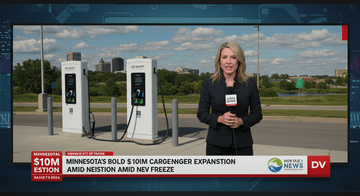Introduction
In a significant move that reflects its commitment to electric vehicle (EV) infrastructure, Minnesota has announced a $10 million expansion of its EV charging network, defying the current freeze imposed by the National Electric Vehicle Infrastructure (NEVI) program. This initiative comes at a crucial time as states across the nation grapple with the challenges of EV adoption and charging accessibility.
The NEVI Program and Its Challenges
The NEVI program, launched as part of the Bipartisan Infrastructure Law, aims to establish a nationwide network of EV chargers to facilitate the transition to electric mobility. However, recent developments have led to a pause in funding allocations due to administrative hurdles and regulatory uncertainties. As a result, several states have found themselves in a precarious position, waiting for clarity on how to proceed with their EV infrastructure plans.
Minnesota's Proactive Approach
Despite the NEVI freeze, Minnesota's Department of Transportation (MnDOT) has taken a proactive stance by allocating $10 million to enhance its EV charging capabilities. This funding will be used to install new charging stations at strategic locations across the state, making it easier for EV owners to recharge their vehicles and promoting the use of electric transportation among residents.
Governor Tim Walz emphasized the importance of this initiative, stating,
“Investing in EV infrastructure is not just about keeping up with technological advancements; it's about ensuring a sustainable future for all Minnesotans.”This statement underscores the state's commitment to sustainability and reducing carbon emissions.
The Benefits of Expanding EV Charging Infrastructure
The expansion of EV charging stations in Minnesota is expected to yield several benefits:
- Increased Accessibility: More charging stations will make it easier for residents and visitors to access EV charging, alleviating range anxiety and encouraging more people to consider electric vehicles.
- Environmental Impact: By facilitating the use of electric vehicles, Minnesota aims to reduce its greenhouse gas emissions and combat climate change.
- Economic Growth: The expansion of charging infrastructure is likely to create jobs in installation, maintenance, and operation, contributing to the state's economy.
Comparison with Other States
Minnesota’s decision is particularly noteworthy when compared to other states that are currently stalled due to the NEVI freeze. States like Michigan and New York have been awaiting guidance on how to utilize federal funds for their EV charging initiatives, leading to delays in their plans. In contrast, Minnesota’s proactive funding approach positions it as a leader in the EV infrastructure race.
Moreover, this expansion aligns with national trends, where states are increasingly recognizing the importance of investing in EV infrastructure to meet the growing demand for electric vehicles. A report from the International Energy Agency (IEA) indicates that global electric vehicle sales are expected to reach 10 million units by 2025, highlighting the urgent need for adequate charging facilities.
Future Implications
The $10 million investment in Minnesota's EV charging network is just the beginning. As the state moves forward with this initiative, it sets a precedent for other states to follow suit. The commitment to enhancing EV infrastructure could lead to a more integrated and extensive network across the Midwest, ultimately contributing to national goals for electric mobility.
Furthermore, as more states begin to act independently of federal constraints, we may see a patchwork of innovative solutions emerging across the country. This could lead to a competitive landscape where states vie for the title of the most EV-friendly region, fostering innovation and collaboration within the electric vehicle sector.
Conclusion
Minnesota’s $10 million EV charger expansion amidst the NEVI freeze illustrates the state’s dedication to fostering a sustainable and accessible electric vehicle landscape. As the demand for electric vehicles continues to rise, the proactive measures taken by Minnesota not only enhance its own infrastructure but also serve as an exemplar for other states navigating similar challenges. With this investment, Minnesota is paving the way for a cleaner, more sustainable future for its residents and setting a standard for national EV infrastructure development.






